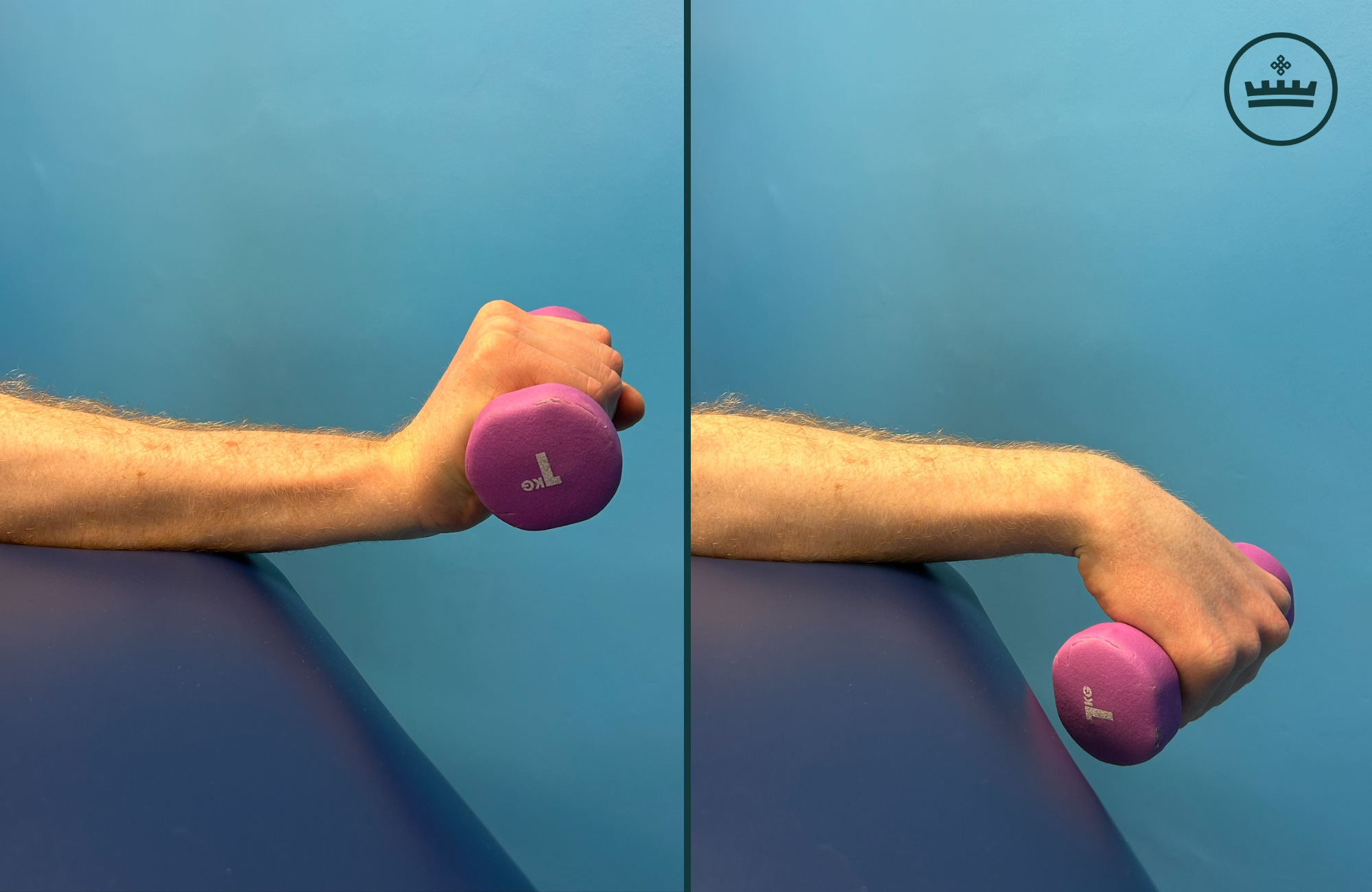What is tennis elbow (lateral epicondylalgia)?
On the outer (lateral) side of your elbow, there is a group of muscles known as wrist extensors. These muscles are responsible for extending the wrist and originate from the lateral epicondyle of the elbow, one of the bony prominences on the outer side. These muscles are attached to the lateral epicondyle by a tendon, which can become inflamed when overworked, leading to a condition known as tennis elbow.
Medically, this condition is referred to as lateral epicondylalgia, or sometimes by the older term lateral epicondylitis.

What are the symptoms?
Tennis elbow can manifest as anything from occasional discomfort following extended forearm use to constant, sharp, stabbing pain. It is characterised by:
- pain on the outer side of the elbow that is tender to the touch
- pain when extending the wrist (bending it backwards)
- pain when gripping objects
In some cases, swelling may occur on the lateral side of the elbow, though this is not always present.
What are the causes?
Most injuries are caused by doing something too much, either a new task or a repetitive task, too quickly. For tennis elbow, repetitive gripping, computer use or heavy lifting are often common mechanisms that cause the injury. Additionally, daily activities like painting, chopping food while cooking, and DIY tasks can also cause tennis elbow.
As the name suggests, the condition is very common in tennis players due to the arm movements associated with the sport, however it is not exclusive to people who play tennis.
How is it diagnosed?
Tennis elbow can be diagnosed by a qualified healthcare professional, for example a physiotherapist. Scans are not required to diagnose tennis elbow and it can instead be diagnosed by assessing and palpating your tendon in the area, your wrist and elbow, and by assessing your strength and grip.
The specialist will also ask questions about your daily activities and tasks which may have caused tennis elbow to develop, your pain levels, and about actions you have taken to deal with the pain so far. This will help paint the full picture of your condition and give the specialist the information they need to make the diagnosis.
What are the treatments?
With most injuries that occur as a result of overuse, resting typically helps to improve your symptoms. This involves cutting back on whatever the trigger for your tennis elbow is – whether that’s playing tennis, regularly lifting heavy items, or using your computer keyboard or mouse at an angle that aggravates your injury.
As well as simply resting, another basic step you can take to treat your condition is to apply an ice pack to reduce the inflammation and numb the pain in the area. You should wrap the ice pack in a towel to avoid direct contact with your skin. To further reduce the pain, if you feel it is necessary, you can take over the counter painkillers, but this is not a long-term solution.
Strengthening exercises for the wrist extensors are crucial for both acute rehabilitation and long-term prevention of tennis elbow. Resisted wrist extension exercises (moving your wrist up and down) can help strengthen these muscles. Muscles adapt when subjected to tension and fatigue, so you should perform these exercises until your arm and wrist feels tired.

Strengthening exercises for the wrist extensors.
However, you should avoid pushing beyond a manageable level of pain during and after these exercises. Rehabilitation sometimes involves low levels of pain (typically no more than a 5/10 pain level), but consult a physiotherapist for specific guidance and a customised rehabilitation program tailored to your needs.
Contact our physiotherapists
If you are experiencing tennis elbow or any other joint or muscle pain, our team of physiotherapists can help treat your injury and reduce your risk of further injury in the future.
Our team of highly specialist musculoskeletal physiotherapists have experience in treating the weekend warrior to working within professional sport. Our clinic at St Thomas’ Hospital is equipped with specialist facilities to take your rehabilitation to the next level and combat your injury. Contact us to learn more.
Discover our physiotherapy specialists
Our physiotherapists provide expert care in occupational health, wellbeing management, and sports injury rehabilitation. With access to gait analysis equipment and extra-corporeal shockwave devices, our physiotherapists offer bespoke, evidence-based treatments to give you the best care.
